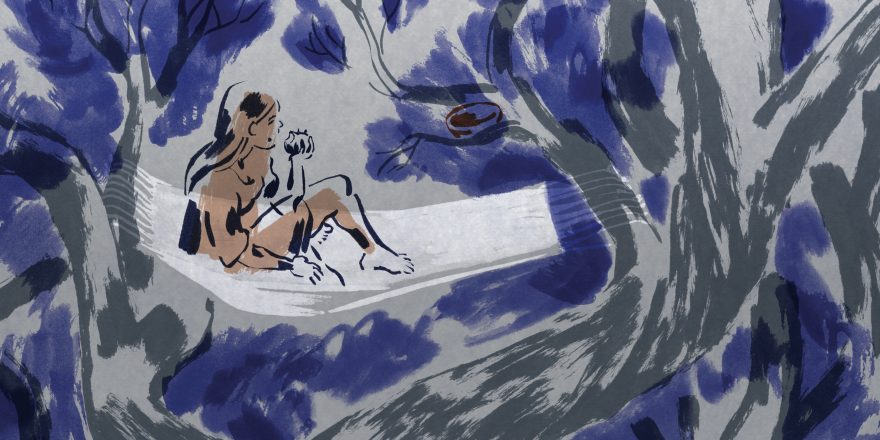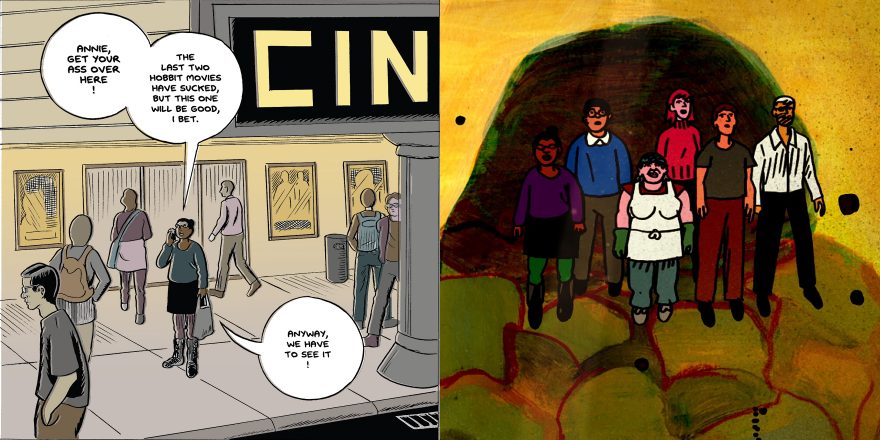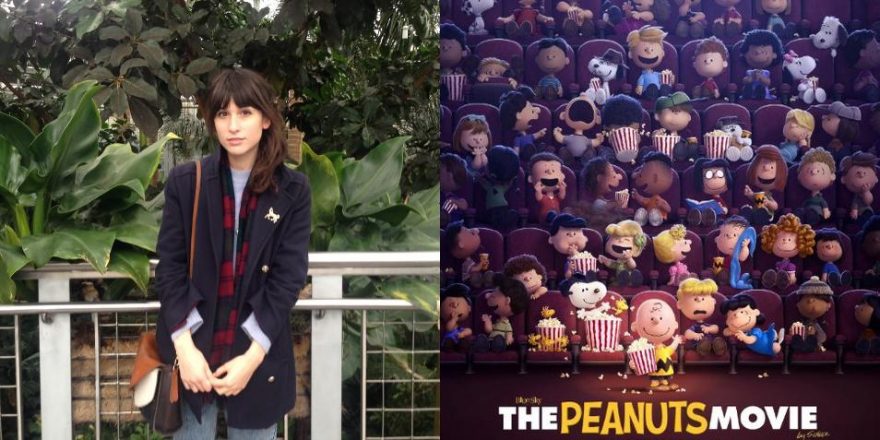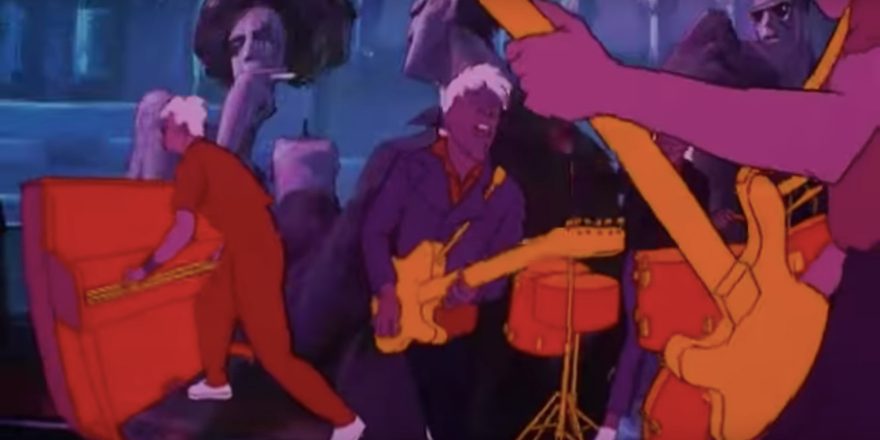I’m currently in production on my second animated feature and am very fortunate to animation students from the local arts college working with us as interns. They scan and process artwork and see our idiosyncratic process. When they leave, I lend them a book or film from my library that they might enjoy or be inspired by. I don’t pretend to have any insight into the 21-year-old mind, but after having done this for a few years I’ve figured out what they tend to like (Moebius, Jillian Tamaki) and also what I love but they’re mostly not into (Ralph Bakshi, Gilbert Hernandez).
However, one movie has risen to the top as an inspirational film to lend to students: the 2016 French animated film The Girl Without Hands, directed by Sébastien Laudenbach.
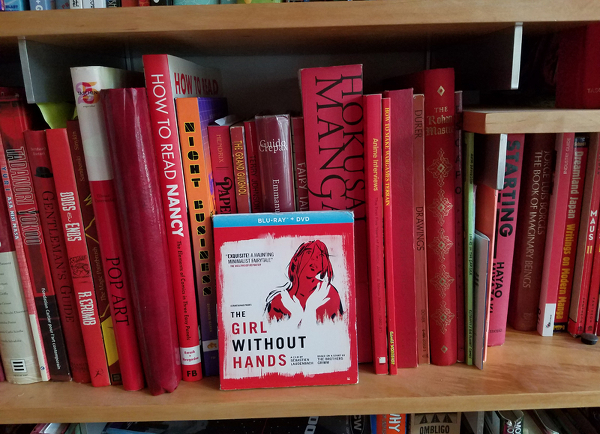
The Girl Without Hands is based on a Grimms’ fairy tale in which a miller unwittingly sells his daughter to the devil. When the devil comes for her, she’s without sin, so is too pure for him to take. The devil is furious at the miller, whose daughter offers her hands to save her father from him. The devil cuts them off. Devastated, the miller’s daughter wanders the forests without hands. She falls into a stream and is saved by a river goddess (voiced by Elina Löwensohn, best known for her work in Hal Hartley movies) who brings her to the castle of a handsome prince. The prince says, “If you want hands, I will give you hands,” after which there is a wordless sequence where floating servant hands bathe and dress her. He gives her golden prosthetic hands with a golden ring, then leaves for war. She gives birth to their son and, of course, the devil once again interferes.
Laudenbach originally planned a bigger budget rendition of this story. In the DVD making-of featurette, he shows us an animation test of what that film would have looked like: clean, design-y, smooth, like something Cartoon Saloon might do. He could never finance the project at that scale, but was still passionate about the story, so he decided to do it in a more lo-fi fashion. The decisions he made to execute it at an independent scale in fact became the film’s greatest strengths.
Inspired by an exercise to draw one minute of animation in just one hour, Laudenbach hoped to draw the entire feature in one year. To attempt this, he built an aesthetic based on the process.
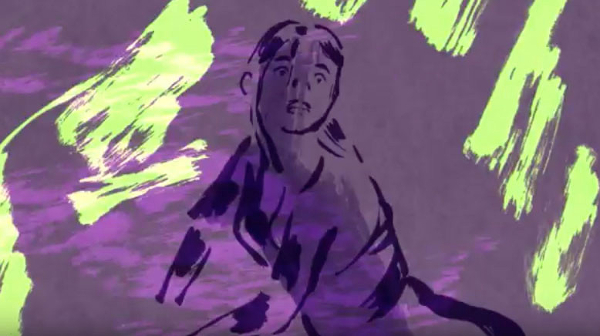
When he began, Laudenbach worked with a black brush and a grey brush, and he didn’t have storyboards, a screenplay or a producer. He said the film “was written in drawings.” This tale of lost hands is completely handmade. He drew 10 or 15 seconds per day and says in the featurette that he was “more interested in drawing than seeing the final result” so he “decided to draw right to the end without checking [his] work.” This “straight ahead” approach was also used by the late Bruce Bickford, but Laudenbach is a completely different artist than Bickford. He’s more akin to moody, brushy French graphic novelists like Blutch, Yvan Alagbé and Baudoin. Sometimes ink drawing backgrounds lay over each other like a silkscreen print. Sometimes they flicker in a loop, or they dissolve from one to the next. After a year, Laudenbach had 40 minutes completed. From there, he watched it, edited it, and found a producer to help to complete the film.
Most significantly, Laudenbach decided each frame would be “incomplete,” like a sketch. This decreases the labor, but increases the strange beauty of the film. The majority of the character frames are near-abstract drawings, just brush strokes, that suggest enough for the human eye, at 24 frames a second, to complete the action. This makes the film, usually described as a more “passive” medium than books, more participatory, almost like reading, as our eyes continuously fill in the gaps of the character’s movements. Each shot takes you a half-second to figure out exactly what you’re looking at. Your mind has to complete the picture.
In one sequence, the girl hides in the branches of an apple tree as a pack of devilish dogs bark below her. The lines of her body, all blue (each character is color-coded to help identify who is who in the abstraction), strobe in spongy splotches, and the hounds are an inky mass of black expressionistic scribbles. She pisses on them – a single white stream descending from the brushy tree. It’s stunning, and one of many small scenes made beautiful by the airy, mysterious tone. Sometimes, the very drawings “breathe” in and out as marks disappear into the paper and reappear again.
At other moments, what we’re looking at is so barely there that the audio solidifies it. This reminds me of Richard McGuire’s brilliant segment in the French animated anthology film Fear(s) of the Dark, where often the viewer is only given a sliver of information but, thanks to the accompanying sound, can complete the action in their mind.
When I typically think of “limited animation” (or “low-budget animation”), I use the definition from Thomas Lamarre’s book The Anime Machine: “Drawing the movement (full) vs. moving the drawing (limited).” Limited animation is usually sliding, still drawings, like a theater set, or most of Robotech, Speed Racer, or Belladonna of Sadness.
The Girl Without Hands‘ drawings are “full,” 24 frames of different drawings, but they are fragmentary, like quick poses done in figure drawing classes.
In art school, sometimes the model will be asked to walk around the class and the students will sketch them as they move. Instead of executing a single floating, frozen body part like a foot or arm, the goal is to capture the gesture of the whole walking body at once. The drawings look like Laudenbach frames: One long, swooping back line leads to a corresponding curve of the leg the weight lands on. A reaching arm becomes one long, twisted line. What are the necessary marks to communicate the action? How few do you need, given your restricted time? This, to me, is spiritually connected to independent cinema: How can less be more powerful?
There are many examples of incredible independently animated short films (see the annual Eyeworks Festival for plenty of examples), but far fewer feature-length narrative films (The Adventures of Prince Achmed, Chronopolis). However, as technology now allows us to scan and edit together animated films less expensively, the roadblocks are only the labor and, of course, the ability to craft a story (or sequence of events – something!) that sustains a feature length. Laudenbach’s passion to tell this story, by any means, led to solutions that make the film better than if he had more money to tell it in a traditional way. He turned what could be perceived as a weakness into the film’s greatest strength and he did it by relying on the audience, our eyes, to complete the picture – what an empowering gesture toward his audience, especially an audience of future animators.


